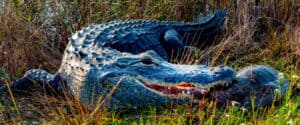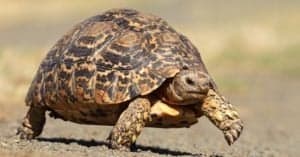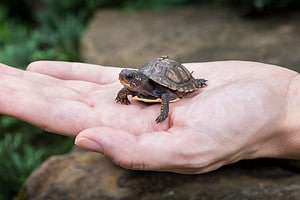Some aquatic turtle species are extremely popular as pets, especially the red-eared slider, which is why discussing their diets is of utmost importance! What aquatic turtles are, what they eat in the wild, and how you should feed them at home – we tell you all the answers and secrets!
What Are Aquatic Turtles?
Although they are called aquatic turtles, implying that they live exclusively in the water, they sometimes go on land, especially to lay eggs. Numerous aquatic turtles live in the depths of the worldwide waters, so we’ll only focus on some of them, primarily map turtles, mud turtles, and pond sliders, with one species for each. This way, we’ll get a general idea of their feeding habits.
In this article, we’ll discuss the northern map turtle, the yellow mud turtle, and the red-eared slider.
What Are Northern Map Turtles?
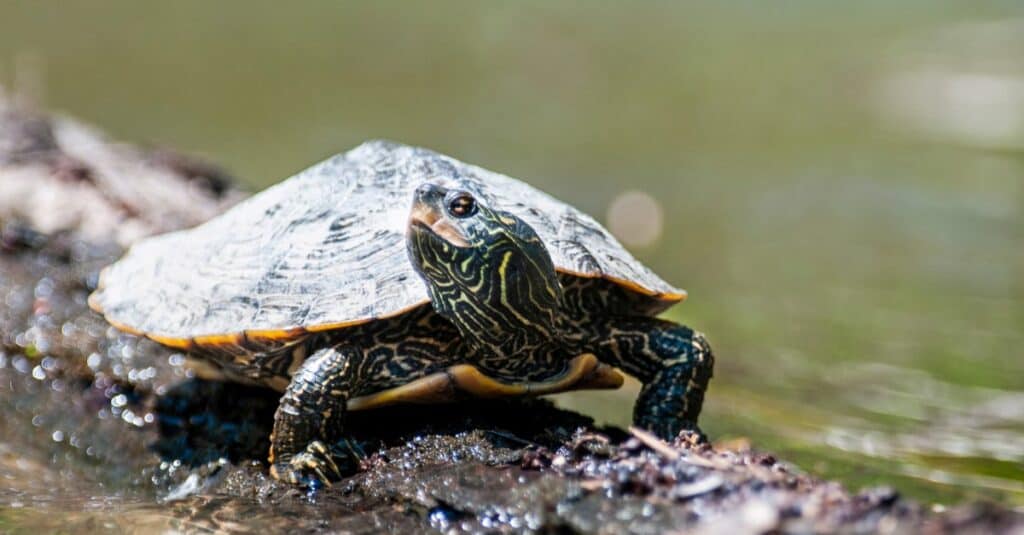
The northern map turtle gets its name from the design on its shell.
©RLS Photo/Shutterstock.com
In scientific terms, the northern map turtle is also called the common map turtle or Graptemys geographica. It’s part of the Emydidae family and endemic to North America. Its carapace has markings that resemble map contour lines, hence its name. The lines may be yellow, orange, or tan with dark borders, while the carapace is either grayish brown or olive.
Male northern map turtles are smaller than females, having 3.9 – 6.3-inch long carapaces and weighing 5.3 – 14.1 ounces. Females’ carapaces can reach 10.6 inches, while their weight may go up to 5.5 pounds!
What Are Yellow Mud Turtles?
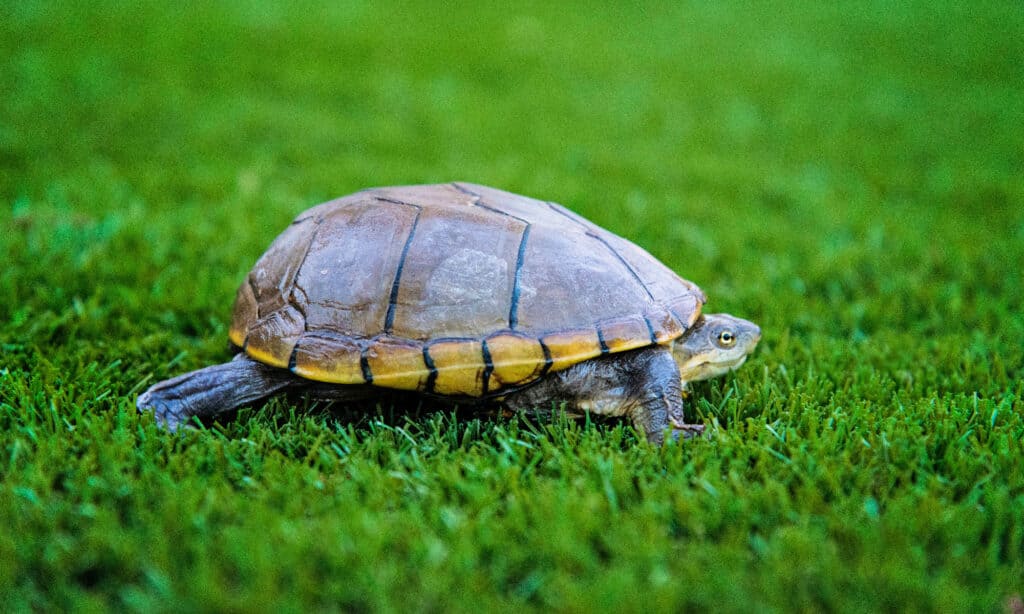
Yellow mud turtles are endemic to the Central United States and Mexico.
©Kayla Blundell/Shutterstock.com
Yellow mud turtles are part of the Kinosternon genus of aquatic turtles. They are endemic to the Central United States and Mexico. These turtles are small and have yellow throats and heads. The sides of their necks are also yellow, while their plastrons are yellow to brown.
What Are Red-Eared Sliders?
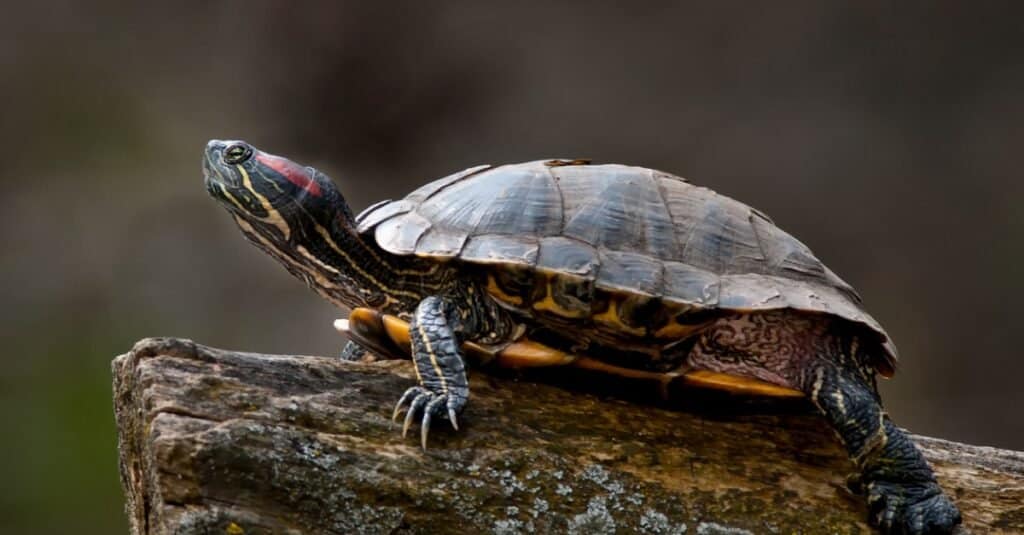
Red-eared sliders are native to the Midwestern United States and Northern Mexico.
©iStock.com/PaulReevesPhotography
The red-eared slider is scientifically called Trachemys scripta elegans and belongs to the Emydidae family. This is probably the U.S.’s most popular pet turtle species and the world’s most traded turtle! It’s also considered invasive.
Red-eared sliders are native to the Midwestern United States and Northern Mexico. They usually grow as large as six to eight inches, although some turtles may reach 16 inches. As with other turtles, females are generally larger than males.
What Do Aquatic Turtles Eat?
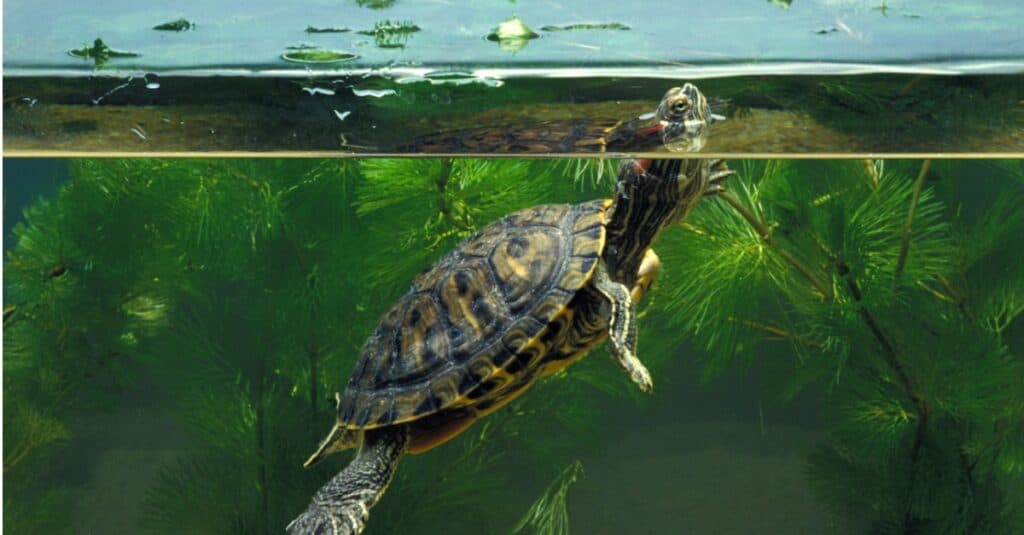
Aquatic turtles eat crayfish, mollusks, beetles, frogs, snails, and vegetation.
©iStock.com/slowmotiongli
While most land-dwelling turtles are herbivorous, aquatic species are predominantly carnivorous. Aquatic turtles can eat crayfish, mollusks, beetles, frogs, snails, and vegetation.
Northern Map Turtles
Female and male map turtles have different diets, primarily because the female heads have specific characteristics. Female map turtles can be divided into three groups with regard to their diets:
- Microcephalic females with narrow heads rarely eat mollusks. Some species with microcephalic females are the yellow-blotched map turtle and the ringed map turtle.
- Mesocephalic females with moderately broad heads primarily eat mollusks but sometimes feed on softer-bodied prey. Northern map turtles, which we’re discussing here, are part of this group.
- Megacephalic females with very broad heads eat only mollusks. Some species with megacephalic females are the Alabama map turtle and the Escambia map turtle.
Male map turtles, including male northern map turtles, do not have a diet that depends on their head width. Therefore, while Male Northern map turtles eat small prey, such as insects and crustaceans, females feed on snails, clams, or crayfish, because their heads are larger and they have stronger jaws.
Yellow Mud Turtles
Unlike northern map turtles, mud turtles don’t have a special diet based on their appearance. Although they primarily eat worms, frogs, snails, fish, crayfish, slugs, fairy shrimp, leeches, or tadpoles, they’re considered omnivores. Yellow mud turtles’ diet may sometimes include vegetation and decaying matter. These turtles look for food both on land and in the water. In early spring, they primarily feed on fairy shrimp.
Red-Eared Sliders
Most pond slider species feed on invertebrates, small fish, crustaceans, tadpoles, birds, and frogs. Red-eared sliders are omnivores, which means they’ll eat both aquatic species and plant-based foods, depending on what they can find. Fruits, aquatic invertebrates, fish, sub-aquatic vegetation, and amphibians are all possible food sources. Baby red-eared sliders eat small fish, amphibian eggs, and tadpoles.
In October, or when the temperature drops below 50 degrees Fahrenheit, red-eared sliders enter a sopor state, a condition of abnormal deep sleep. During this time, the turtles neither eat nor defecate. When the weather gets warmer, usually during early March or as late as the end of April, red-eared sliders return to normal and start looking for food.
How Should I Feed My Aquatic Turtle?
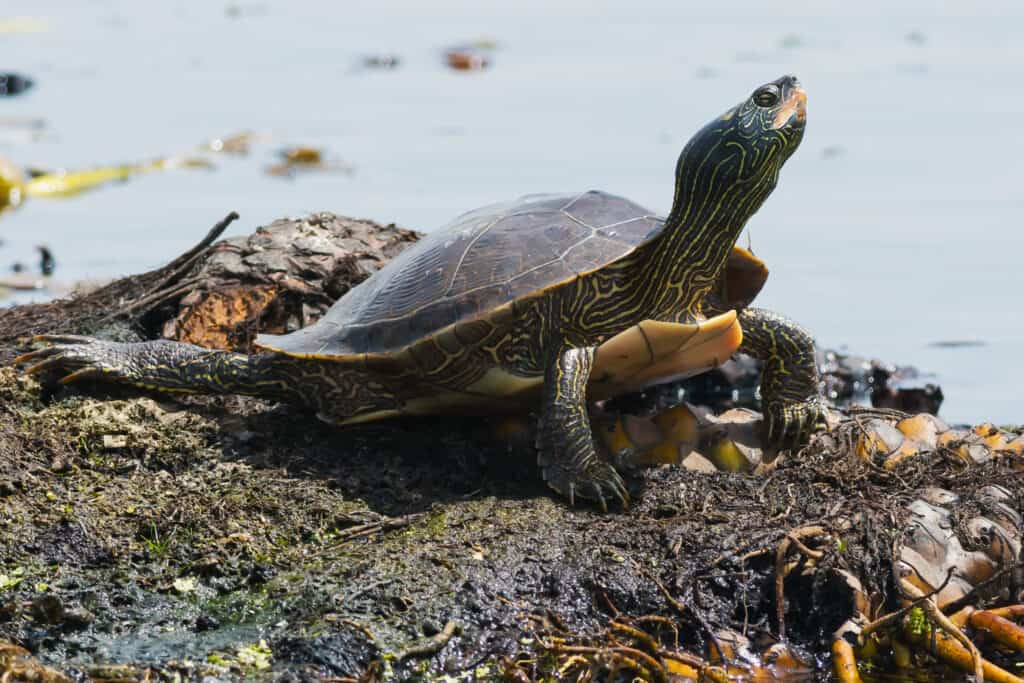
Choosing a diet for your aquatic turtle depends on what species you have.
©iStock.com/PaulReevesPhotography
Choosing a diet for your aquatic turtle highly depends on what aquatic turtle species you have. While most species are carnivores, some species also eat vegetation. The diet should also be adjusted depending on the turtle’s size. Generally, here’s what you can give your aquatic turtle to eat:
- Live fish, but not too often, as they may contain parasites and bacteria and may cause thiamine deficiency
- Tadpoles
- Frogs
- Earthworms
- Snails
- Slugs
- Grasshoppers
- Moths
- Mealworms
- Beetles.
It’s not recommended to give it raw meat or fish because they do not contain the required nutritional values for an aquatic turtle.
However, don’t forget that carnivorous turtles shouldn’t eat only live animal protein. Their diet should also include commercially produced turtle pellets.
Omnivorous turtles should also eat vegetables, plant matter, and pellets besides animal protein.
What Vegetables Can Aquatic Turtles Eat?
If your aquatic turtle is an omnivorous species, half of its diet will consist of plant matter. The other half should be split between animal protein and pellets. You can give it the following vegetables:
- Romaine lettuce
- Mustard greens
- Collard greens
- Endive
- Carrot tops
- Swiss chard
- Parsley
- Green beans
- Kale
- Turnip greens
- Dandelion greens
- Clover
- Spinach
- Squash
- Shredded carrots
It’s best if you can provide your aquatic turtle with dark, leafy greens mixed with other vegetables. Each feeding should include 2 – 3 types of greens and 1 – 2 types of vegetables. You can change their diet once every two weeks.
What Fruits Can Aquatic Turtles Eat?
If your turtle is omnivorous, you may also give it raw fruit. You should cut the fruit into small pieces. Here’s what fruit a turtle will eat:
Up Next:
The photo featured at the top of this post is © iStock.com/jtstewartphoto
Sources
- VCA Animal Hospitals, Available here: https://vcahospitals.com/know-your-pet/turtles-aquatic-feeding
- Wildlife Waystation, Available here: https://wildlifewaystation.org/animals/species/turtle-red-eared-slider
- PetMD, Available here: https://www.petmd.com/reptile/nutrition/what-do-turtles-eat
Thank you for reading! Have some feedback for us? Contact the AZ Animals editorial team.



